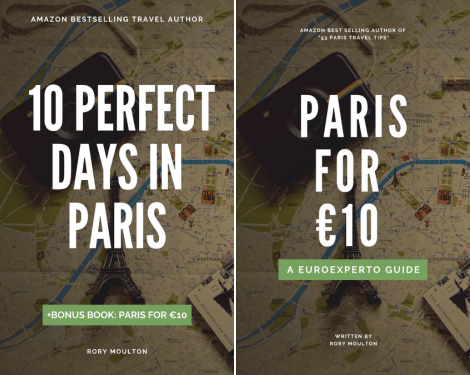
Even in the age of ultra-cheap airline flights and plush coach buses, train travel using a Eurail pass remains my preferred method of transportation in Europe. For most of my family’s trips to Europe, we’ve purchased Eurail passes to save money and time on Europe’s extensive rail grid.
For the uninitiated, here’s a look at determining which Eurail pass — if any — is right for your trip.
First, why buy a Eurail pass?
Aren’t Eurail passes meant for backpacking college kids? NOPE! Eurail passes are incredibly family friendly and offer the best transportation value in Europe. In addition to no-hassle train travel, Eurail offers several explicit family benefits:
- Up to two kids age 4–11 travel free with each adult on any Eurail-brand pass
- Kids under 4 always ride free
- 10%+ online group discount for 2-5 people traveling together
- For kids too old to ride free, Eurail offers a great-value youth pass rate
Additionally, family travelers enjoy all the benefits of a Eurail Pass: 1st Class Travel (for adults over 25 and their kids) and free-to-heavily discounted rail transportation on virtually all major European rail lines.
Not only will a Eurail pass save you money, but it will also allow you to be spontaneous, taking unplanned day trips and overnights and making unscheduled stops because you can…you’ve already paid for your pass, so you might as well make the most of it!
Step 1: Is a Eurail pass worth it?
In order to decide whether or not buying a Eurail pass makes financial sense, you’ll have to do some rough math using your itinerary.
First, double-check that the countries on your itinerary accept Eurail passes. They are:
- Austria
- Belgium
- Bulgaria
- Croatia/Slovenia
- Czech Republic
- Denmark
- Finland
- France
- Germany
- Greece
- Hungary
- Ireland
- Italy
- Luxembourg
- Montenegro/Serbia
- Netherlands
- Norway
- Poland
- Portugal
- Romania
- Slovakia
- Spain
- Sweden
- Switzerland
- Turkey
Phew, that’s a lot. That should cover it. You may have noticed that Great Britain’s decrepit and overpriced rail system is noticeably absent, though they do have a country pass (explained below).
Second, review your itinerary and figure out all your travel days — travel days between destinations as well as day trips. Deduct any rides not covered by a Eurail pass (typically “scenic” or “tourist” lines and overnight trains).
If you’re unsure or traveling on a loose itinerary (good for you!), then my recommendation is to take your best guess and add two. So, if your itinerary calls for five travel days over three weeks, figure seven total travel days — your itinerary may change and/or you may have day trips for which you hadn’t accounted. Don’t go overboard on extra days, but it’s a nice feeling to have one or two in your back pocket.
Third, total up the train fares for you and everyone else in your group using one of these tools:
Keep that total handy and dive into which Eurail pass is the right fit.
Step 2: Decide which Eurail passes to buy
It’s time to price out the right Eurail passes for your family.
Single Country
Every participating Eurail country (and wee Britain) offers a single-country pass. Obviously, if you’re visiting only one country, then this is your option. Country passes typically cover multiple modes of transportation in addition to trains, like buses and even boats.
My take on single-country passes: You’ll need to travel frequently within one country, dive deep into one of Europe’s large and railway-saturated countries (Spain, France, Italy…) or travel through mountainous, transport-intensive terrain (Switzerland, Austria, N. Italy…) to make this pass worth it.
Pick your country and number of travel days to accurately price your passes right over here.
Select
For itineraries that include between 2-4 countries and 5-10 travel days, the Eurail Select Pass fits the bill. Here’s the catch: Your choices must be “adjoining countries connected by train or ship.”
So, using this tool, pick the countries and travel days for pricing info. My family usually opts for this pass.
Global
I have to admit: I get giddy just writing about the Global Eurail Pass. Positively giddy. You’ll need to have one rocking itinerary to make this pass worthwhile — and I fully recommend you do!
[bctt tweet=”I have to admit: I get giddy just writing about the Global Eurail Pass.”]
The Global Eurail Pass comes in two versions: continuous and flexi. A continuous pass is good for 15 or 22 travel days, or 1, 2 or 3 travel months. A flexi pass offers 5 or 7 travel days of travel within a 1 month period or 10 or 15 travel days to be used within a 2-month period, with your choice of consecutive or non-consecutive travel days.
The Global Pass prices might shock you, but there is no more cost-effective way and certainly no more fun of a way to do a full tour of the Continent. Spending a month or more in Europe? Take a hard look at the Global pass; it’s worth the investment. Buy a Global Pass here.
The Verdict
Ok, now for the moment of truth: Is the cost of a Eurail country, select or Global pass cheaper, equal to or only slightly more than buying individual tickets? If yes, then you qualify for a Eurail pass and may proceed to step three.
If the pass costs substantially more, then a Eurail pass probably isn’t the right tool for your trip. Instead, consider buying individual, point-to-point train tickets specific to your travel plans.
Step 3: Purchase your Eurail passes
To save money, I recommend purchasing your Eurail pass online and having paper passes mailed to your home. Purchase at least two weeks prior to your departure date. Buy your Eurail pass from recommended vendor Rail Europe here.
Don’t miss the deals!
Eurail offers deals periodically throughout the year. Check here to see what’s on sale: https://www.raileurope.com/special-deals/featured-deals.html
Interested in backpacking Europe with your family? My guidebook, Backpacking Europe with Kids arrives online in February 2018. Subscribe here for updates: http://rorymoulton.com/subscribe/






